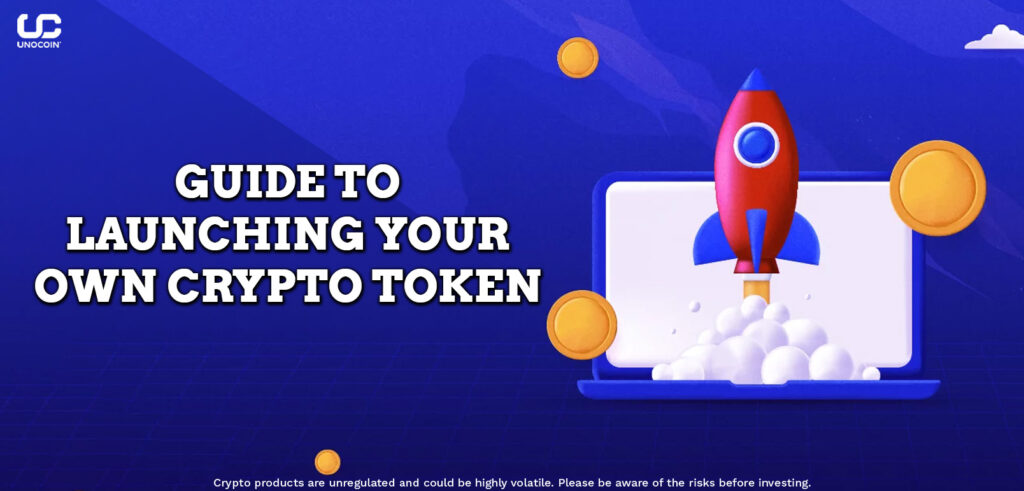The world of blockchain has unlocked a new era of digital ownership, decentralisation and programmable money. Today, creating a crypto token is no longer limited to expert coders — entrepreneurs, startups, brands and developers across industries are launching tokens for fundraising, rewards, gaming, real-world asset tokenisation and community engagement. If you’re planning to build a token of your own, this step-by-step guide will help you understand the entire journey from concept to deployment.
Step 1 — Define the Purpose and Use Case
A token should exist for a reason — this becomes the foundation of its long-term demand.
Common use cases include:
- Utility tokens for powering an app or platform
- Governance tokens for voting in a DAO
- Reward tokens for gaming or community loyalty
- Asset-backed tokens representing real-world assets
- Meme or community tokens for branding and engagement
The stronger the utility and narrative, the healthier the future adoption.
Step 2 — Choose Your Blockchain
A token lives on a blockchain, so picking the right chain is crucial. Popular choices include:
- Ethereum (ERC-20 standard): Most adopted and highly secure
- BNB Chain (BEP-20): Low fees and fast transactions
- Solana (SPL): High throughput for gaming and DeFi
- Polygon: Ideal for low-cost scaling
- Avalanche: Fast and customizable
Factors to consider: transaction speed, gas fees, ecosystem size, wallet support, and developer tools.
Step 3 — Plan Tokenomics
Tokenomics influence user behaviour and the long-term value of the token. Key elements include:
- Total supply (eg. 1 million / 1 billion)
- Distribution model (team, community, staking rewards, reserves)
- Vesting periods for team and investors
- Use-case demand drivers (staking, payments, rewards, governance)
- Burn or buyback mechanics (optional)
Transparent and fair tokenomics build trust and attract investors.
Step 4 — Build the Smart Contract
A token is governed by a smart contract — a self-executing code that defines token rules. You can:
✔ Hire a blockchain developer
Best for professional long-term projects.
✔ Use token-generation platforms (no code required)
Platforms like PinkSale, Presail, Moralis, and TokenTool allow you to generate tokens without programming.
Important smart-contract features:
- Minting and burning functions
- Transfer rules
- Transaction fees (optional, for tax tokens)
- Ownership control and renounce options
- Liquidity lock automation
Security-audited contracts reduce hacking risks and increase investor confidence.
Step 5 — Deploy to Mainnet
Once testing on a testnet (such as Goerli, BSC Testnet or Solana Devnet) is completed, the contract can be deployed to the real blockchain. Deployment requires a crypto wallet (MetaMask, Phantom, etc.) and gas fees in the native chain currency (ETH, BNB, SOL, etc.). After deployment, your token becomes live and transferable.
Step 6 — Verify and Publish the Contract
To build transparency and trust, verify the smart contract on blockchain explorers such as:
- Etherscan
- BscScan
- Solscan
Project documentation and a whitepaper can also be published at this stage.
Step 7 — Create Liquidity and Enable Trading
If you want your token to be tradeable, you can:
- Add liquidity on decentralised exchanges (Uniswap, PancakeSwap, Raydium)
- Later, apply for centralised exchange listings
A strong community and marketing strategy help drive trading volume and adoption.
Step 8 — Build Utility and Community
A token’s success depends on ecosystem growth. Focus on:
- Real value utilities
- Partnerships and collaborations
- Staking or reward mechanisms
- Active community on Telegram, Discord and X (Twitter)
The more the token is used and needed, the more sustainable its value becomes.
Final Thoughts
Creating a crypto token is now easier than ever — but building something that lasts requires vision, tokenomics and real utility. Whether you’re launching a project, building a Web3 startup, or creating a digital community, a well-designed token can unlock new opportunities and accelerate innovation.
Please find the list of authentic Unocoin accounts for all your queries below:
- Twitter: https://twitter.com/Unocoin
- Instagram: https://www.instagram.com/unocoin/
- Facebook: https://www.facebook.com/unocoin/
- LinkedIn: https://in.linkedin.com/company/unocoin
- YouTube Channel: https://www.youtube.com/c/Unocoin/videos
- Newsletter: https://medium.com/subscribe/@Unocoin_growth
- Blogs: https://blog.unocoin.com
- Telegram Group: https://t.me/Unocoin_Group
- Telegram Channel: https://t.me/+fasQhTKBsfA5N2Zl
- Telegram: https://t.me/UnocoinSupport_Bot
- E-mail id: support@unocoin.com
- Contact details: 7788978910 (09:30 AM IST – 06:30 PM, Mon-Sat)
- App store link: https://apps.apple.com/in/app/unocoin-indian-crypto-exchange/id1030422972
- Playstore link: https://play.google.com/store/apps/details?id=com.unocoin.unocoinwallet
Disclaimer: Crypto products are unregulated as of this date in India. They could be highly volatile. At Unocoin, we understand that there is a need to protect consumer interests as this form of trading and investment has risks that consumers may not be aware of. To ensure that consumers who deal in crypto products are not misled, they are advised to DYOR (Do Your Own Research).

